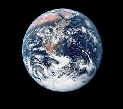www.aljazeerah.info
Opinion Editorials, March 2011
Archives
Mission & Name
Conflict Terminology
Editorials
Gaza Holocaust
Gulf War
Isdood
Islam
News
News Photos
Opinion Editorials
US Foreign Policy (Dr. El-Najjar's Articles)
www.aljazeerah.info
Nowruz, the Feast of Peace and Purity
By Kourosh Ziabari
Al-Jazeerah, CCUN, March 28, 2011
Ornamented with precious values of the ancient Persian
civilization, Nowruz is an Iranian festivity which marks the beginning of
the new solar year on the first day of spring and vernal equinox.
Today, more than 300 million people around the world celebrate Nowruz and
hold festivals and ceremonies to glorify this invaluable historical
tradition.
People in the Persian-speaking countries of Iran,
Tajikistan and Afghanistan celebrate Nowruz along with some groups of people
in Turkey, Azerbaijan, Uzbekistan, Turkmenistan, Kyrgyzstan, Syria, Iraq,
Kosovo, Kazakhstan, Albania, Macedonia and Georgia.
On February 23,
2010, the United Nations General Assembly recognized March 21st as the
International Day of Nowruz and called for increased international attention
to this ancient Persian tradition which is now encompassing the whole Middle
East, Central Asia, Caucasus and Black Sea Basin.
The UN General
Assembly "called on Member States that celebrate the festival to study its
history and traditions with a view to disseminating that knowledge among the
international community and organizing annual commemoration events."
Prior to the recognition of March 21st as the International Day of Nowruz,
the United Nations Educational, Scientific and Cultural Organization
(UNESCO) had included this ancient Persian festival in its Representative
List of the Intangible Cultural Heritage of Humanity upon the submission of
a proposal by Iran and its neighboring countries to the organization.
Nowruz is a festival which is celebrated during 13 days. According to the
Jalali Calendar which was devised and designed by Omar Khayyam, the renowned
Iranian philosopher, polymath and mathematician, the first day of Nowruz is
coincided with the moment of the transition of the year or the commencement
of vernal equinox in which the sun is observed to be directly over the
equator, and the north and south poles of the Earth lie along the solar
terminator; sunlight is equally divided between the north and south
hemispheres.
The moment of the transition of the year has been
symbolically and traditionally dear and cherished to the Iranian people.
They believe that at this moment, the old year comes to an end and the New
Year begins, so all of the improper habits, bad memories, animosities and
enmities should disappear and be replaced by happiness, goodwill, friendship
and benevolence.
A few hours prior to the beginning of the New
Year, Iranians spread a table setting called Haft Seen. On this table
setting, Iranians put seven items and materials whose names begin with the
Persian letter "Seen" or the English "S" and represent a certain quality
which is beloved by the people.
Some of the most popular items of
Haft Seen table include "Samanu" which is a sweet pudding made from wheat
germ and characterizes cheerfulness, rejuvenation and affluence, "Sib" or
apple which symbolizes rebirth, health and well-being, "Sekkeh" or coins
which represent wealth and richness, "Sonbol" or the fragrant hyacinth
flower which announces the beginning of the new year and "Somaq" or sumac
which stands for sunrise and power.
One of the most popular customs
which is conventionally observed by the Iranians during the 13 days of
Nowruz is family gatherings. Children of any age go to visit their parents
and grandparents and get holiday gifts from them. The grandmothers and
grandfathers retell ancient stories, tales and fables for the youngsters.
Fathers and mothers bring dry nuts, sweetmeat, eggs and clothes for the
newly-married couples.
The housewives and mothers usually grow
wheat, barley or lentil sprouts in dishes and place them on the Haft Seen
table. On the 13th day of Nowruz which is called Sizdah Bedar or the Day of
Nature and is believed to be a day of blessing and bounty for the people,
all of the families leave their homes, go out and camp in the groves or
prairies and also throw their dishes of wheat, barely or lentil sprouts in
the rivers so that the potential bad omen, immorality and evilness of the
coming year disappear with the dish.
However, Iranians have
rightfully mixed their ancient national traditions with religious symbols to
make Nowruz an opportunity for moral and spiritual revitalization along with
recreation and amusement.
Since the emergence of Islam in Iran, the
people of Iran merged Nowruz with Islamic customs and used the opportunity
of the New Year festivals to approach the Almighty God and enshrine their
traditional religious beliefs. For the Muslim nation of Iran, Quran is the
paramount component of the Haft Seen table which is put on the most elevated
position of the table setting.
During the last moments of the old
year in which all of the family members gather around the Haft Seen table
and wait for the transition of the New Year, Iranians pray for the wellbeing
of the patients, the improvement and progress of their country and
propagation of goodwill and benevolence to all over the world.
Nowruz is a festival for peace and purity. You can find in it both enjoyment
and spirituality. Terrestrial and divine beauties can be seen in Nowruz
simultaneously. Nowruz is an opportunity for the enrichment of the self and
integration and solidarity of those who celebrate it all around the world.
|
|
|
|
||
|
||||||


